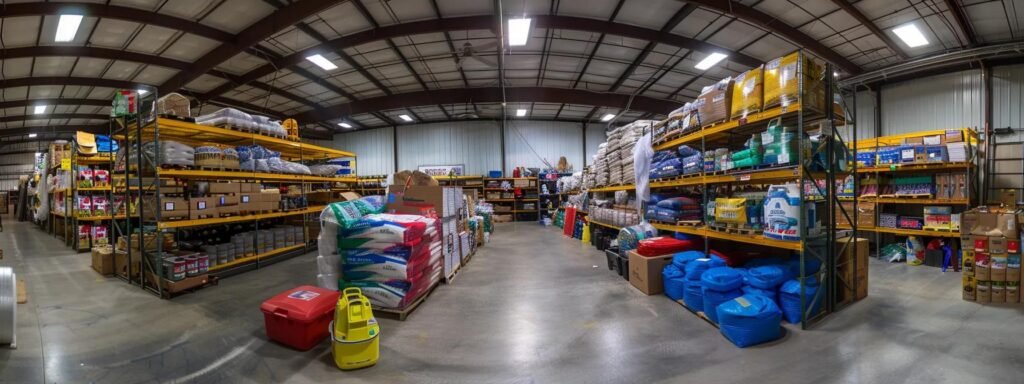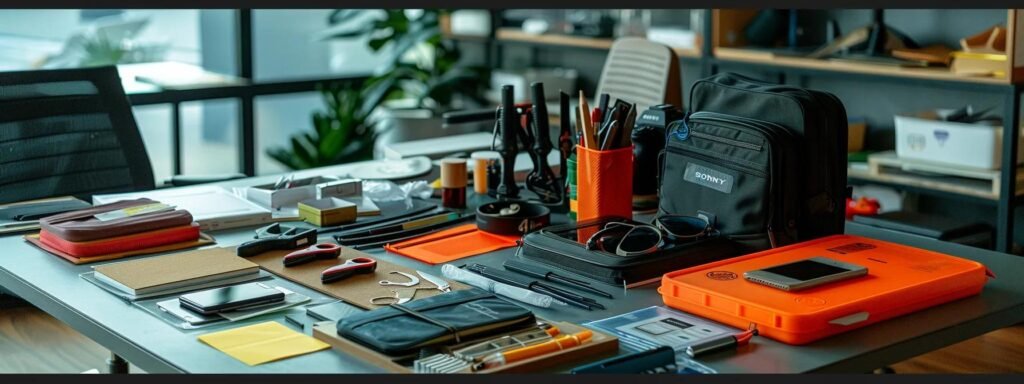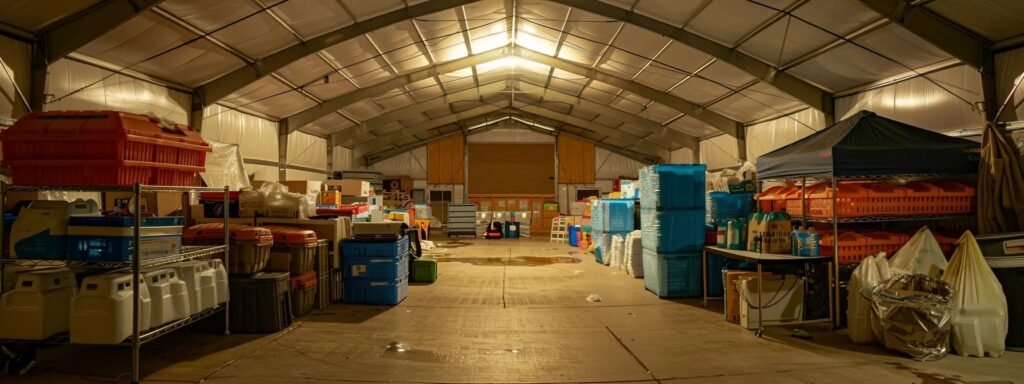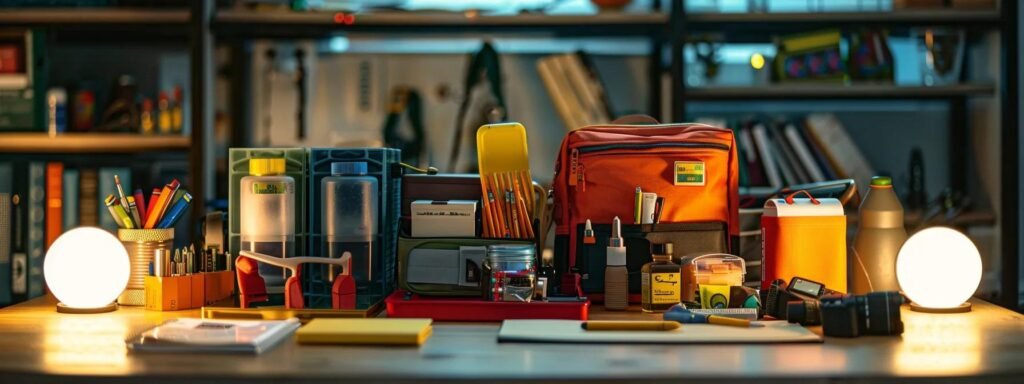
Emergency Supplies for Effective Storm Preparation
Storms can strike with little warning, leaving homeowners vulnerable if they are not adequately prepared. Effective emergency management requires having a comprehensive kit that includes crucial food, water, first-aid supplies, and communication tools. Homeowners need a clear strategy to face severe weather events, ensuring they have the right equipment to survive floods, wind damage, and power outages. In some cases, professional support such as tree service debary may be essential for clearing debris and fallen trees. This article explains the must-have emergency supplies, how to choose and store them, and recommendations from agencies like FEMA and the American Red Cross. It also offers tips to keep your storm preparedness kit reliable and current.
What Are the Must-Have Emergency Supplies for Storm Readiness?
Homeowners must have a well-stocked collection of supplies to deal with storm emergencies. Essential supplies include non-perishable food, water, first-aid items, communication devices, and sanitation equipment that keep you safe and connected during outages.
Which Food and Water Supplies Should You Include in Your Storm Kit?
A three-day supply of bottled water and non-perishable food such as canned goods, energy bars, dried fruits, and ready-to-eat meals is critical. Stock water at one gallon per person per day and include items that require little preparation. A manual can opener and vitamin supplements add extra protection, while high-energy snacks and protein-rich foods help sustain energy during recovery.
What First-Aid and Medical Supplies Are Essential for Storm Emergencies?
Your kit should cover basic injuries and specific health needs. Include a comprehensive first-aid kit with adhesive bandages, gauze, antiseptics, tweezers, and over-the-counter medicines (pain relievers and anti-inflammatory drugs). Additionally, stock necessary prescription medications, an extra supply of antibiotics, and any medical devices like a blood pressure monitor. These supplies are crucial when storm conditions hinder access to healthcare.
How Do Communication Tools and Lighting Improve Storm Preparedness?
Including battery-operated or hand-crank radios, flashlights, extra batteries, and portable power banks ensures you can communicate with emergency services during disruptions. A NOAA weather radio, LED flashlights, or headlamps aid navigation in the dark, reduce anxiety, and keep you informed when traditional channels fail.
How Do You Choose the Right Emergency Preparedness Kit for Your Needs?

The ideal kit depends on household size, specific risks, and individual needs. Evaluate your environment and potential storm hazards to build a kit with every necessary component without redundancy.
What Are the Differences Between Family, Individual, and Pet Emergency Kits?
A family kit caters to multiple individuals with extra food, water, medications, clothing, and hygiene products, including child-specific items like diapers and formula. In contrast, an individual kit is compact and personalized. For those with pets, include pet food, water, leashes, and any necessary medications. Customizing your kit for every member minimizes stress during emergencies.
How Can You Customize Emergency Kits for Specific Storm Types and Locations?
Customization means adapting your kit to local risks. For example, coastal areas might require extra waterproof bags and sandbags for flooding, while cold regions should include thermal blankets and portable heaters. If power outages are frequent, consider solar chargers and alternative lighting. Reviewing local emergency management guidelines helps ensure your kit is comprehensive.
When and How Should You Prepare Your Emergency Supplies for Storm Season?
Preparation before storm season is critical. Assemble and update your emergency supplies well in advance. Regularly check and restock your kit to avoid having outdated or insufficient items when needed.
What Are the Best Practices for Storing Emergency Supplies Safely?
Store supplies in cool, dry, and accessible locations. Use a designated, weatherproof area away from direct sunlight to protect food and medications. Airtight containers help preserve perishables, and maintaining an inventory list with expiration dates ensures that items are rotated before they expire. Secure storage also helps prevent theft and interference by animals.
How Early Should You Assemble Your Storm Preparedness Kit?
Ideally, your kit should be ready at least one month before storm season. Starting off-season helps you take advantage of better pricing and avoids last-minute rushes. Early preparation also allows you to test the durability of essential items like flashlights and food supplies.
What Are the Key Sanitation and Shelter Supplies Needed During Storms?

Staying healthy and getting temporary shelter are critical during storms. Emergency sanitation and shelter supplies protect you from disease and exposure if your home is damaged or utilities fail.
Which Sanitation Items Help Maintain Hygiene During Storm Emergencies?
In emergencies, maintaining hygiene prevents the spread of illness. Essential sanitation items include hand sanitizer, moist towelettes, portable toilet paper, and disinfecting sprays. Garbage bags and personal hygiene kits with soap and dental care supplies further ensure cleanliness when conventional facilities fail.
What Shelter and Warmth Supplies Are Critical for Different Storm Conditions?
Key shelter supplies include heavy-duty tarps, durable sleeping bags, thermal blankets, and portable tents for temporary refuge. In colder conditions, include insulation materials such as foam pads and emergency space blankets. These items help you quickly create a safe, warm space and prevent hypothermia during prolonged outages.
Prepare Essential Emergency Supplies for Optimal Storm Readiness
Agencies like FEMA and the American Red Cross provide clear, research-based guidelines to help homeowners build effective storm kits. These guidelines ensure that you cover all critical supply areas and store items properly.
What Emergency Supply Guidelines Does FEMA Provide for Storm Preparedness?
FEMA emphasizes a well-rounded kit that includes food, water, first-aid supplies, and communication tools. They recommend a minimum three-day supply of non-perishable food and one gallon of water per person per day, along with a battery-powered NOAA weather radio, sturdy flashlights, cash, extra batteries, and waterproof copies of essential documents.
How Does the American Red Cross Advise on Emergency Kits and Supplies?
The American Red Cross advises including both survival and comfort items. They suggest personal hygiene items, clean water, communication aids, and lighting supplies. They also stress the importance of regularly updating your kit to replace expired items and adjust to changes in household needs.
What Are the Best Tips for Maintaining and Updating Your Emergency Supplies?

Maintenance is as crucial as assembly. Regularly inspect, clean, and update your kit so that all items function correctly and nothing is expired. Setting reminders to review your supplies at least twice a year or after a major storm ensures your kit remains ready for use.
How Often Should You Check and Replace Emergency Supplies?
It is recommended to check your kit every six months. Replace any expired or used items immediately, and keep a record of expiration dates on food, water, and batteries. This helps prevent the kit from failing when you need it most.
What Are Common Mistakes to Avoid When Managing Storm Preparedness Kits?
Avoid overloading your kit with redundant items or storing supplies in unsafe locations. Focus on quality over quantity by selecting scientifically proven supplies that serve multiple purposes. Regular updates and testing of equipment like flashlights and radios are essential. Also, do not overlook the needs of all household members, including pets.
Where Can You Buy Reliable Emergency Supplies and Kits for Storm Preparation?
Reliable emergency supplies can be purchased either as pre-assembled kits or as individual components that allow for customization. Trusted retailers include home improvement stores, online marketplaces, and specialized emergency supply companies affiliated with disaster relief organizations.
What Are the Benefits of Pre-Assembled Emergency Kits From Trusted Providers?
Pre-assembled kits offer immediate availability and expertly curated supplies. They typically include food, water, first-aid supplies, and communication devices designed to meet governmental recommendations. These kits save time and eliminate guesswork, and often come with warranties and customer support, simplifying future updates.
How to Select Quality Individual Emergency Supplies for Custom Kits?
When building a custom kit, assess product quality, durability, and safety certification. Reviewing product specifications, consumer reviews, and prices from trusted brands can help you select reliable items. Ensure that each component meets guidelines from FEMA and the American Red Cross to fulfill your household’s specific requirements.
Detailed Emergency Supplies List
- Non-Perishable Food Items: Canned goods, energy bars, dried fruits, and ready-to-eat meals provide essential calories and nutrients during outages.
- Water and Hydration Supplies: At least a three-day supply, with one gallon per person per day, plus water purification tablets and filters.
- First-Aid Supplies: A fully stocked kit with bandages, antiseptics, pain relievers, and personal medications.
- Communication and Lighting Essentials: Battery-operated or hand-crank radios, LED flashlights, extra batteries, and power banks.
- Sanitation Kits: Hand sanitizers, moist towelettes, disinfecting wipes, toilet paper, and personal hygiene items.
Emergency Supplies Comparison Table
Before choosing supplies, consider this quick reference:
| Supply Category | Key Items | Benefit | Recommended Quantity |
|---|---|---|---|
| Non-Perishable Food | Canned goods, energy bars | Provides essential nutrients | 3-day supply per person |
| Water and Hydration | Bottled water, purification tablets | Ensures safe drinking water | 1 gallon per person per day |
| First-Aid Supplies | Bandages, antiseptics, medications | Supports treatment of injuries | Complete first-aid kit |
| Communication Tools | Battery-powered radio, flashlights | Enables access to information | At least two per household |
| Sanitation Supplies | Hand sanitizer, moist towelettes | Maintains hygiene during crises | Sufficient for one week per person |
This table provides a concise reference for assembling a balanced storm preparedness kit.
Frequently Asked Questions
Q: How critical is it to customize my storm kit for local conditions?
A: Customizing your kit based on local weather risks and available resources is essential for maximizing safety and efficiency.
Q: How often should I update my emergency supplies?
A: Check your supplies every six months and after major storm events, replacing expired or damaged items as needed.
Q: Should I buy a pre-assembled kit or build my own?
A: Both options offer benefits. Pre-assembled kits provide expert curation and convenience, while custom kits allow you to tailor supplies to your household’s needs.
Q: What types of first-aid items are absolutely necessary in an emergency kit?
A: A comprehensive first-aid kit should include bandages, antiseptics, pain relievers, and any necessary prescription medications.
Q: How can I ensure my emergency kit remains functional during a long-term outage?
A: Regular maintenance, including testing communication devices and replacing batteries and expired items, is key to ensuring your kit is always ready.
Final Thoughts
Effective storm preparation depends on thorough planning, timely maintenance, and following trusted guidelines from emergency management organizations. Homeowners should assess their needs, tailor their kits accordingly, and re-evaluate supplies semi-annually. With proactive preparation, you can minimize disruptions and significantly enhance the safety and resilience of your home during storm events.